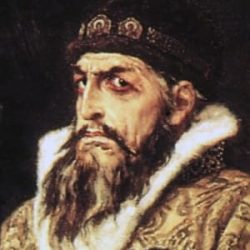[Hello, Muscovites! It looks like the blog is off to a slow start, so I decided to write an example post to get things going. If you want to post about the assigned sources for Monday, you can reply to this post or write your own. I’m looking forward to your ideas!]
In her article about the Cap of Monomakh, Nancy Shields Kollman explains that the cap went through some substantial changes from when it was first created in the 1300s to when it was mentioned in the “Tale of the Princes of Vladimir” in the 1500s. I found it particularly striking that even though the Cap became a symbol of the Muscovite princes’ claim to legitimacy stemming from the Byzantine Empire, it actually started its existence as a symbol of the legitimacy bestowed on them by the Mongol khans. And the Muscovite princes were initially proud of that Mongol origin, too! Kollmann writes, “It was an esteemed treasure in the regalia of the Moscow grand princes for almost two centuries before the ‘Tale of the Princes of Vladimir,’ and it had come to Moscow not from Byzantium but from the East, through the culture of the Golden Horde.” (Kollmann, p.39) I have two questions about this situation. First, let’s think about how the Muscovite princes hold onto the same object while changing its meaning. How does this situation help us think about them as strategists? Does their flexibility undermine their legitimacy, or should we respect them all the more? Second, looking at the image of the Cap itself: taking away the fur, jewels, and cross that were added later, what does this object reveal about Mongol culture and values?

